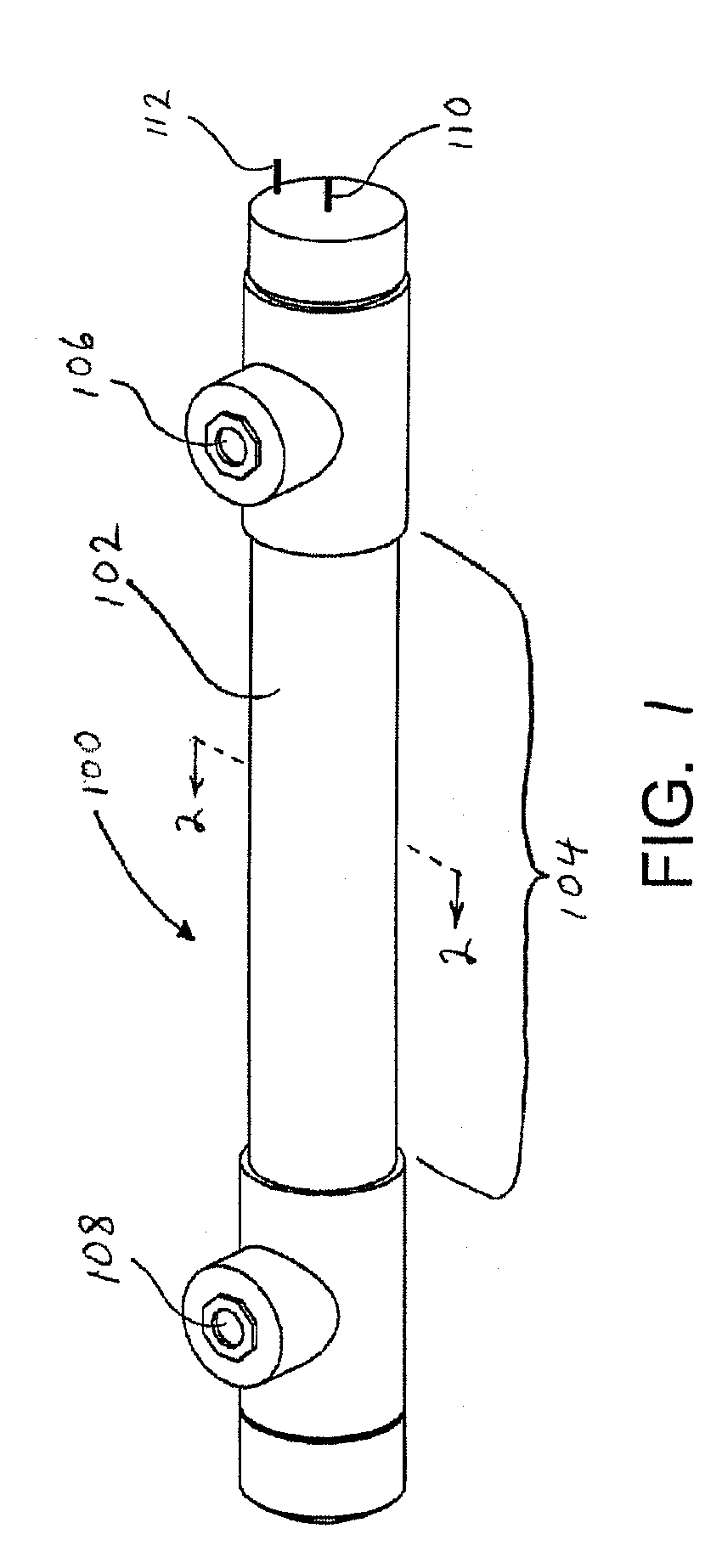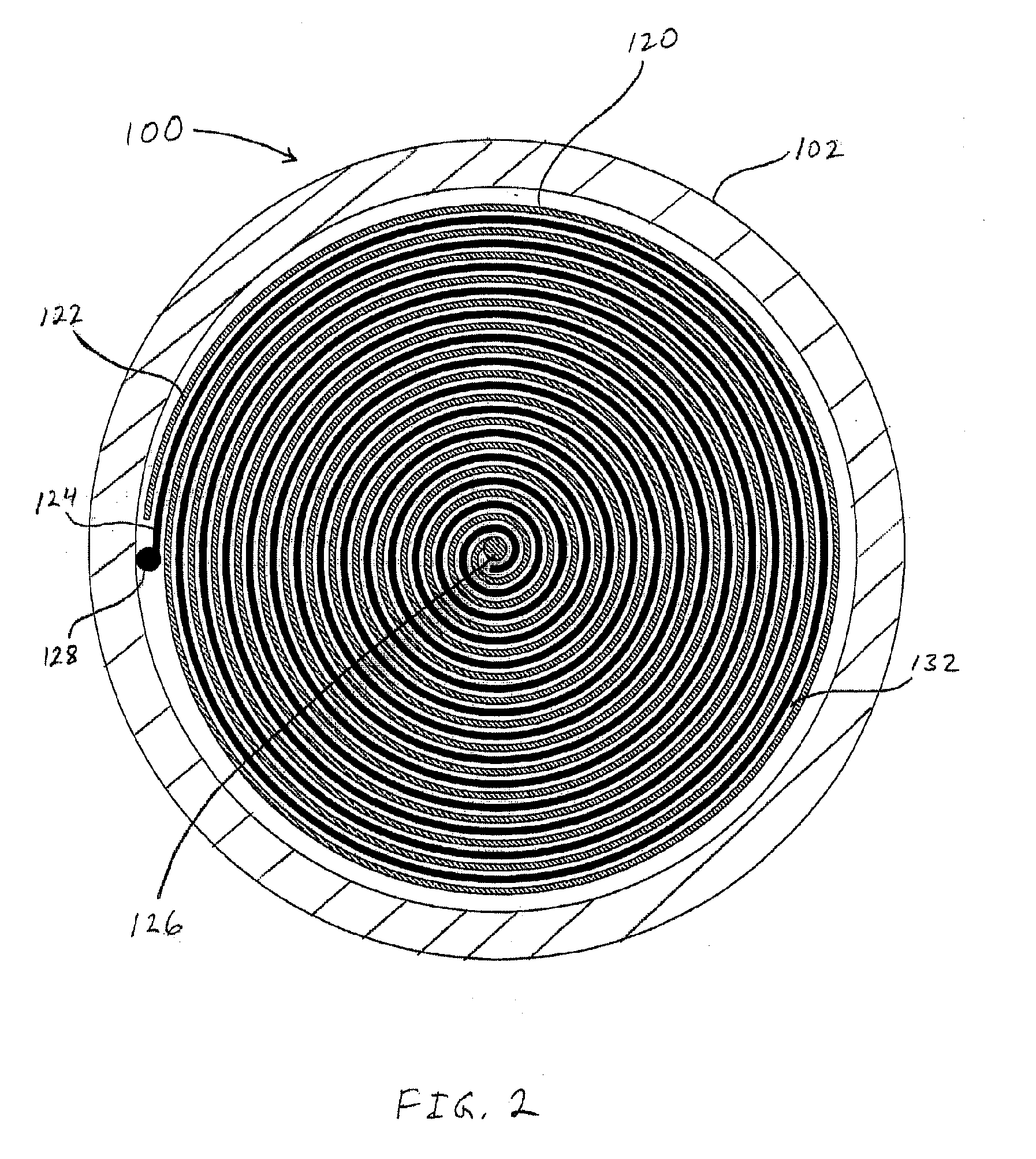Electrocoagulation reactor and water treatment system and method
a technology of electrocoagulation reactor and water treatment system, which is applied in the direction of electrolysis components, filtration, manufacturing tools, etc., can solve the problems of increasing the number of electrode plates, introducing significant complexities, and introducing additional complexities, etc., and achieves convenient design, large electrode surface area, and easy design
- Summary
- Abstract
- Description
- Claims
- Application Information
AI Technical Summary
Benefits of technology
Problems solved by technology
Method used
Image
Examples
Embodiment Construction
[0018]Reference is now made to the accompanying drawings, to assist in illustrating the various aspects and features of the present invention. In this regard, the following descriptions of particular embodiments for an electrocoagulation reactor, the spirally wound assembly thereof, and systems, methods and uses including an electrocoagulation reactor, are presented herein for purposes of illustration and description. Furthermore, the description is not intended to limit the invention to the particular form or forms disclosed herein. Consequently, variations and modifications commensurate with the teachings presented herein, and the skill and knowledge of the relevant art, are within the scope of the present invention. The embodiments described herein are further intended to explain the best modes known of practicing the invention and to enable others skilled in the art to utilize the invention in such, or other embodiments and with various modifications required by the particular a...
PUM
| Property | Measurement | Unit |
|---|---|---|
| separation distance | aaaaa | aaaaa |
| internal diameter | aaaaa | aaaaa |
| length | aaaaa | aaaaa |
Abstract
Description
Claims
Application Information
 Login to View More
Login to View More - R&D
- Intellectual Property
- Life Sciences
- Materials
- Tech Scout
- Unparalleled Data Quality
- Higher Quality Content
- 60% Fewer Hallucinations
Browse by: Latest US Patents, China's latest patents, Technical Efficacy Thesaurus, Application Domain, Technology Topic, Popular Technical Reports.
© 2025 PatSnap. All rights reserved.Legal|Privacy policy|Modern Slavery Act Transparency Statement|Sitemap|About US| Contact US: help@patsnap.com



